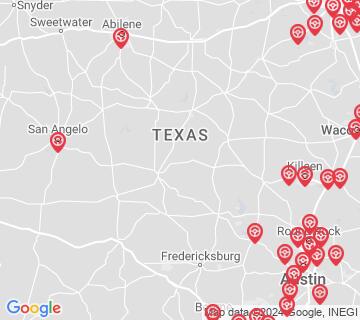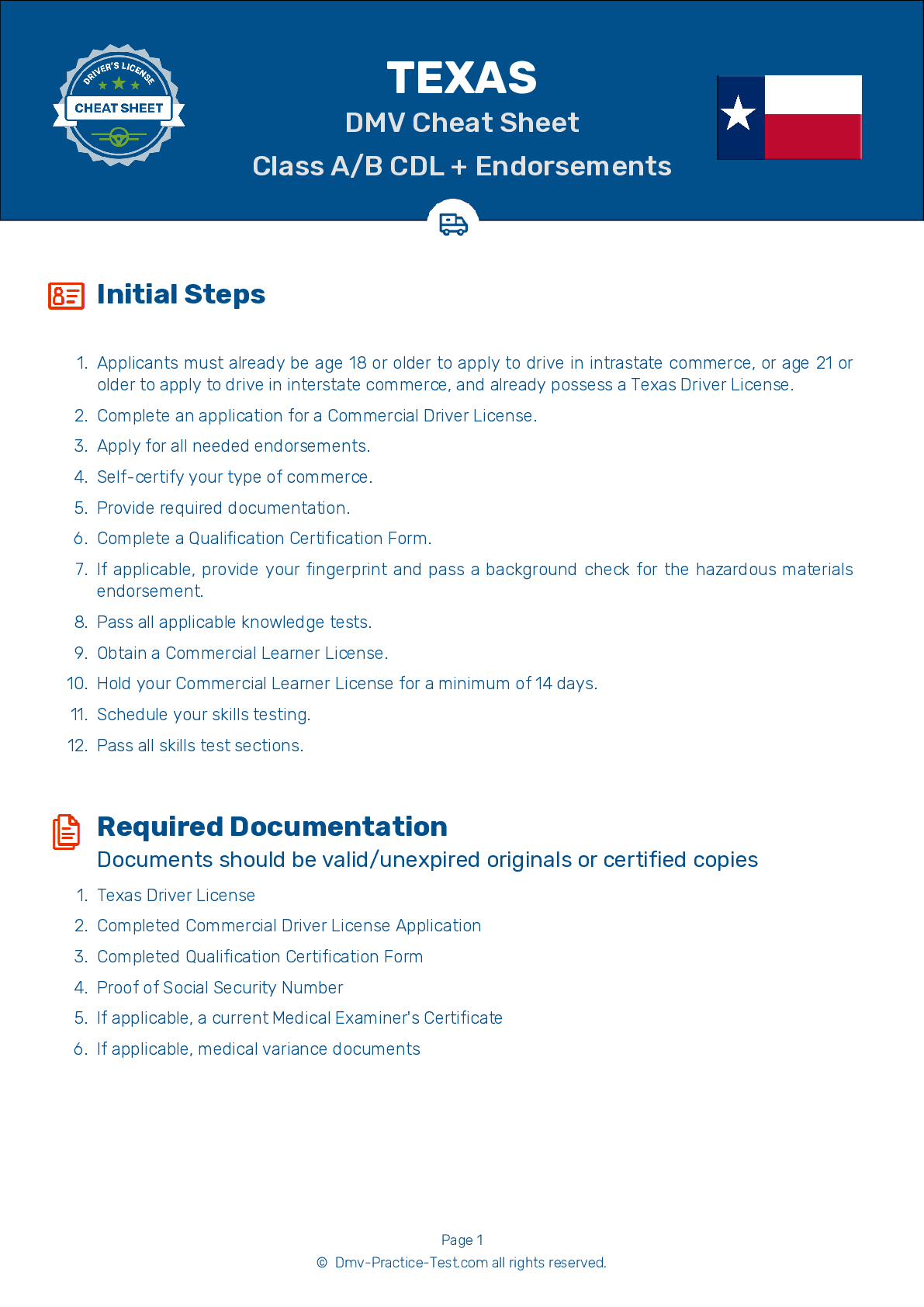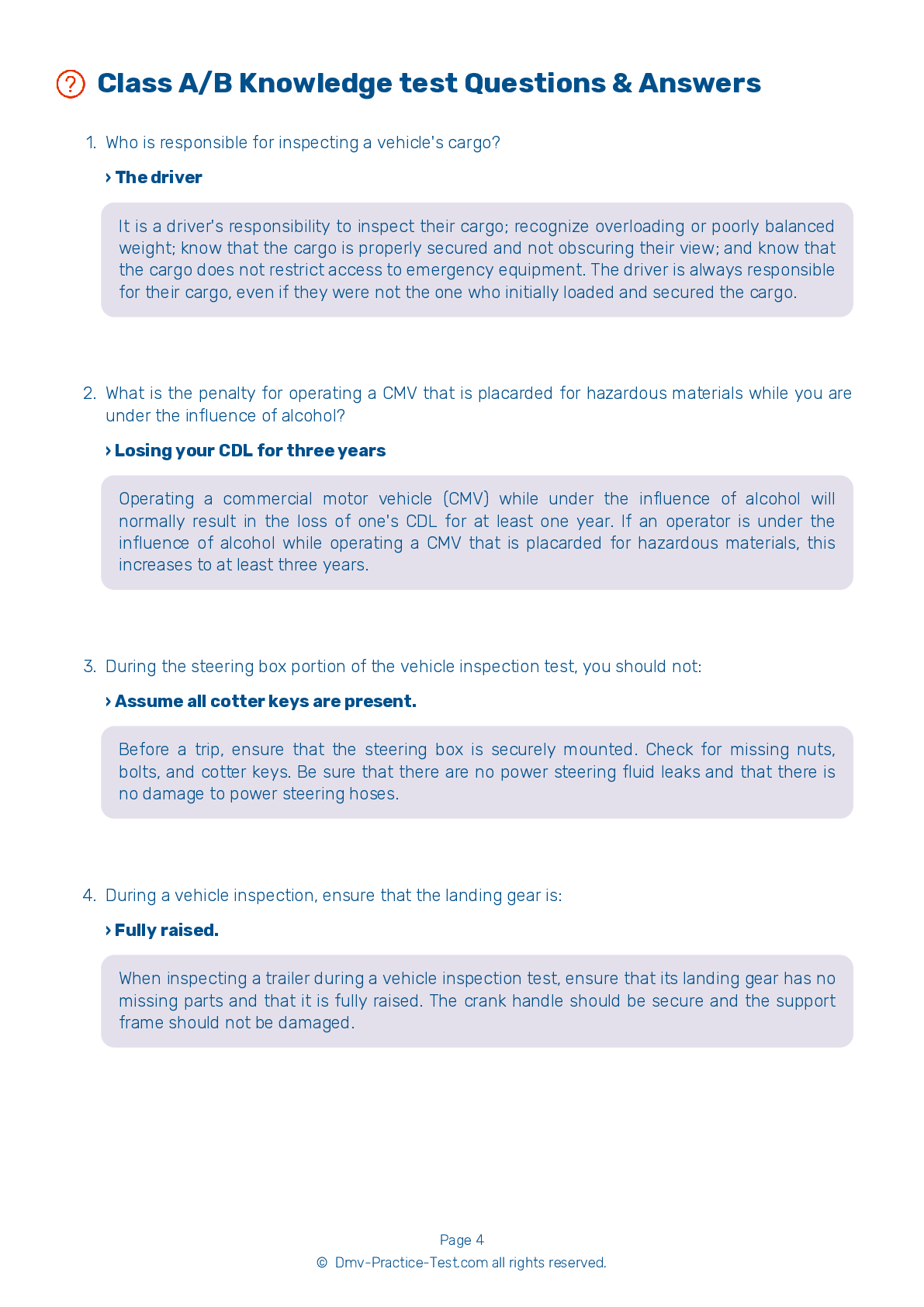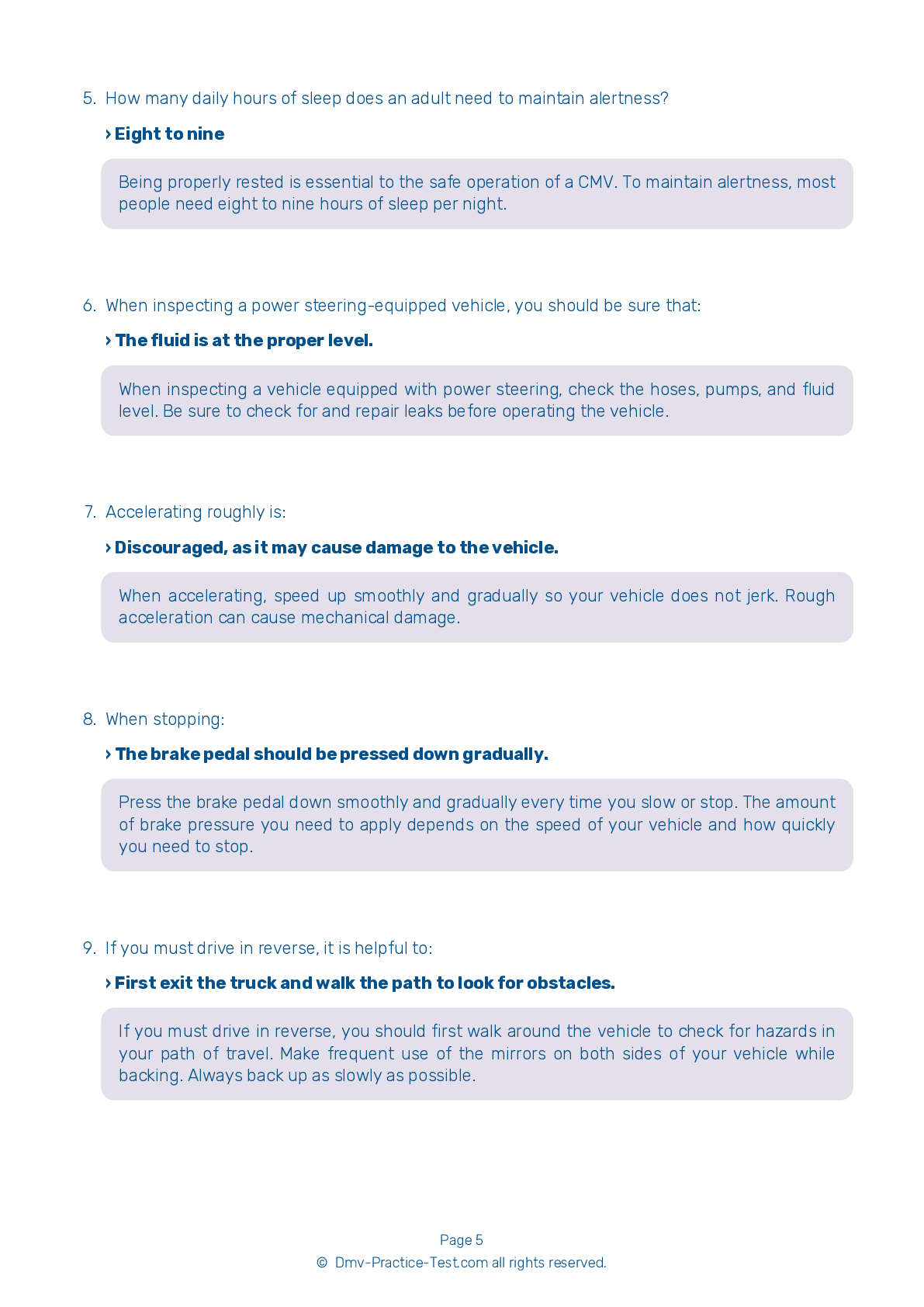Knowledge Test Class B #2
Class B Driving Test | Texas 2025 #2 Page 3 of 7
Train for FREE online with our Texas class B license test. The official exam test consists of several obligatory parts, with all of them checking your knowledge of different blocks of road rules. If you need to obtain a TX CDL class B permit in 2025, practice as much as possible. Free sample tests published on our website will help you check and improve your knowledge and boost your grades. Please bear in mind that CDL class B requirements may vary from state to state.
50
40
22
15 . When taking the basic control skills test, drivers are:
Allowed to leave the vehicle, but only if the vehicle is placed in neutral and the parking brake is set.
During the basic vehicle control skills test, you must place the vehicle in neutral and set the parking brake before exiting the vehicle to check its position. You may check the position of the vehicle no more than twice, except during the straight line backing exercise, where you may look no more than once.
16 . What can happen if your vehicle has a high center of gravity?
The tires may not be able to handle the weight.
The height of a vehicle's center of gravity is very important. A high center of gravity (cargo piled up high or heavy cargo on the top of a load) increases the possibility of your vehicle tipping over.
17 . If approaching a railroad crossing while driving a placarded vehicle, you should always:
Change lanes while on the tracks.
If approaching a railroad crossing while driving a transit bus, school bus, or placarded vehicle, special procedures apply. Before crossing, stop your vehicle within 50 feet of, but not less than 15 feet from, the nearest rail. Activate your four-way flashers while crossing. Do not stop, change gears, or change lanes while any part of your vehicle is proceeding across the tracks.
18 . On trucks and buses, where are ABS malfunction lamps located?
Under the hood
Tractors, trucks, and buses with Anti-Lock Braking Systems (ABS) have yellow malfunction lamps located on their instrument panels. Trailers have yellow ABS malfunction lamps on their left side, either on the front or rear corner.
19 . If driving a school bus, your four-way flashers should:
Only be used near railroad tracks if a train is approaching.
When driving a school bus, you must activate your four-way flashers while approaching and crossing a railroad crossing. Deactivate the flashers once your entire vehicle has cleared the tracks.
20 . During a vehicle inspection, be sure that:
The emergency exits are not accessible from inside the cab.
During the vehicle inspection test, you must ensure that any emergency exit warning devices are working. All emergency exits should operate smoothly, be undamaged, and close securely from the inside.
21 . Why do you need to drain air tanks regularly?
To remove bad air from the tanks
Compressed air in an air brake system usually contains a certain amount of water and compressor oil. The water and oil can damage the brakes if left to accumulate in the system. Tanks must be drained regularly to remove this build-up.
Search the best driving school in your neighbourhood
2025 Texas | Frequently Asked Questions
To acquire a CDL Hazmat endorsement in Texas, you must first have a Commercial Driver's License (CDL). Then, pass the Hazardous Materials Endorsement Knowledge Test at a Texas Department of Public Safety office. After passing, you'll need to undergo a TSA background check. Once cleared, the endorsement will be added to your CDL.
To obtain a CDL Hazmat license, you must first hold a valid Commercial Driver's License (CDL). You must be at least 21 years old and have a clean driving record. You'll also need to pass the Hazardous Materials Endorsement Knowledge Test and undergo a TSA background check. Good vision and physical health are also prerequisites.
When applying for a CDL Hazmat endorsement, you will need your current CDL, proof of U.S. citizenship or legal status (like a birth certificate or green card), and proof of identity and Texas residency. You'll also need your Social Security card and a completed Application for Texas Driver License or Identification Card. Lastly, you'll need to pass a TSA background check.
Yes, there is a dedicated written test for the CDL Hazmat endorsement. Called the Hazardous Materials Endorsement Knowledge Test, it covers topics like loading and unloading hazardous materials, bulk packaging marking, driving and parking rules, and emergency response procedures. This test must be passed to obtain the Hazmat endorsement.
The written test for the CDL Hazmat endorsement covers a range of subjects related to hazardous materials. These include recognizing hazardous materials, safe loading and unloading procedures, proper use of placards and labels, emergency response procedures, driving and parking rules for hazardous materials, and understanding the associated risks and regulations.
Yes, acquiring a CDL Hazmat endorsement comes with additional charges. These include a fingerprinting fee for the required TSA background check, and an endorsement fee. The exact costs can vary, so it's recommended to check with your local Department of Motor Vehicles (DMV) or similar agency for the most accurate information.
Yes, obtaining a CDL Hazmat endorsement requires a background check and security clearance. The Transportation Security Administration (TSA) conducts the check, which includes fingerprinting and a review of criminal, immigration, and terrorism records. This process is necessary to ensure the safety and security of hazardous materials transportation.
Yes, specialized training is required for the CDL Hazmat endorsement. Applicants must pass a written test, and in some cases, a driving test with a vehicle that carries hazardous materials. Once passed, this endorsement is added to your Commercial Driver's License (CDL). Regular renewal of this certification is also required.
No, you cannot legally transport hazardous materials without a valid Commercial Driver's License (CDL) with a Hazardous Materials (Hazmat) endorsement in the United States. This requirement ensures that drivers have the necessary training and knowledge to handle such materials safely, protecting public safety and the environment.
Yes, you can add the CDL Hazmat endorsement to your current CDL. You don't need to apply for a new CDL. However, you must pass the Hazmat knowledge test, undergo a TSA background check, and pay the required fees. Once completed, the endorsement will be added to your existing CDL.




